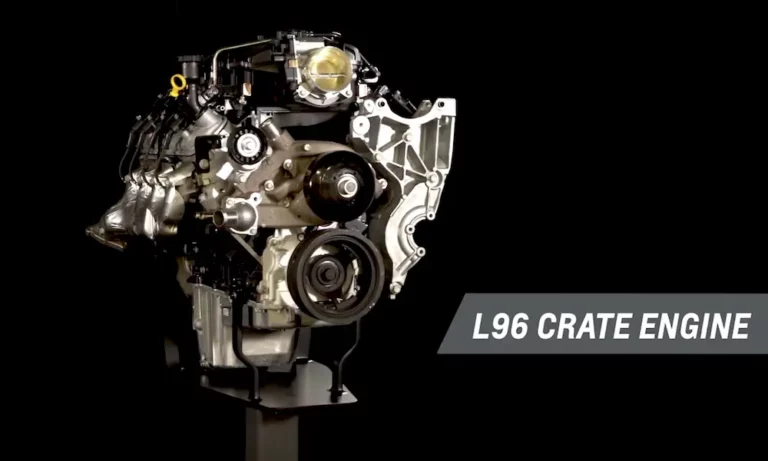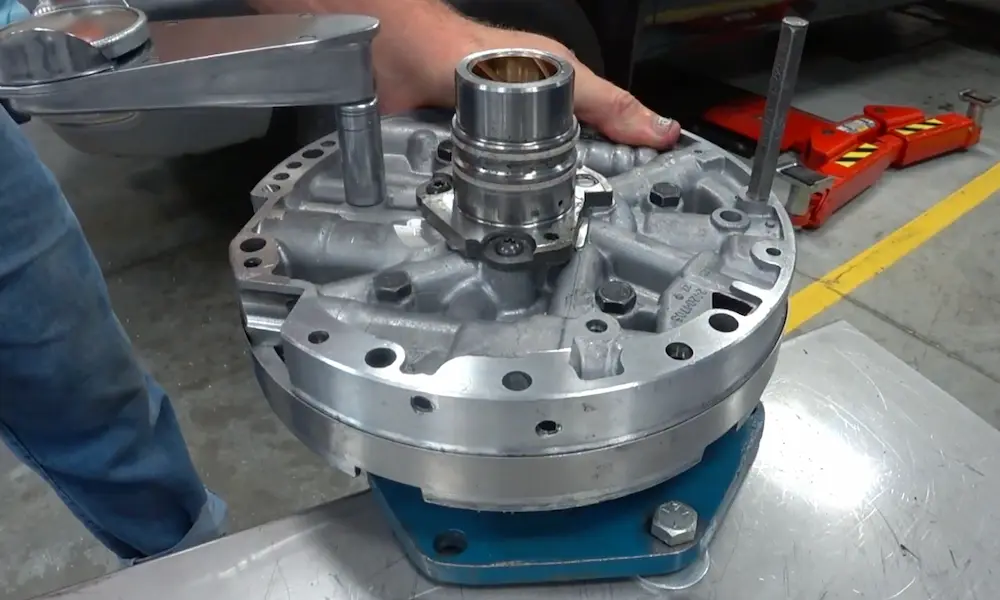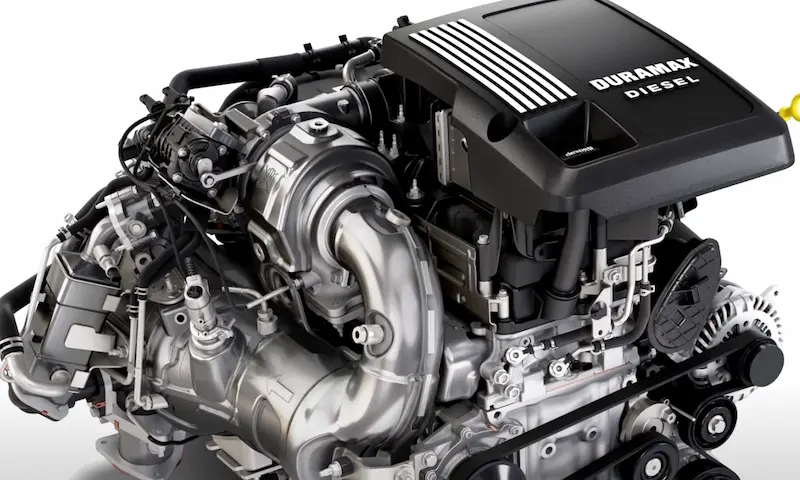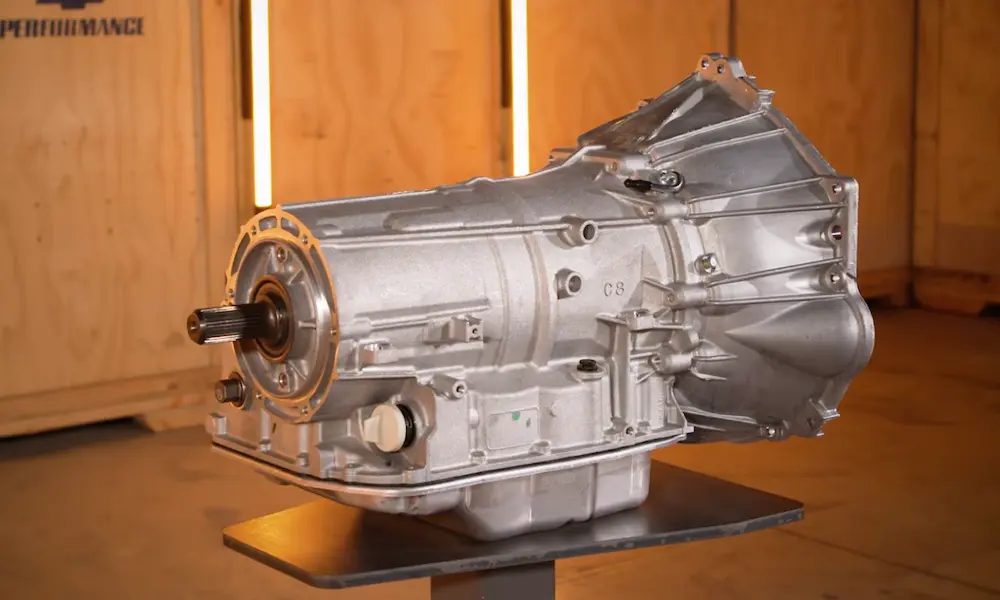Looking for reliable information about the L96 6.0L engine? Whether you’re planning an engine swap, troubleshooting issues, or just curious about what powers your HD truck, understanding this workhorse V8 is essential. This guide breaks down everything from basic specs to performance potential of GM’s iron block titan.
What Is the L96 Engine?
The L96 is a 6.0L V8 engine produced by General Motors from 2010 to 2017 (with production continuing through 2020 for certain van applications). Part of GM’s Generation IV small block family, it’s essentially a flex-fuel capable version of the LY6 engine.
You’ll find the L96 in Chevrolet and GMC heavy-duty trucks and vans, where it earned its reputation for durability and torque. While sharing DNA with other LS-based engines, the L96 stands out with its iron block construction and flex fuel capability.
Some key numbers worth knowing:
- 360 horsepower
- 380 ft-lbs of torque
- 9.6:1 compression ratio
- 6.0 liters (364 cubic inches) displacement
L96 Engine Block: Built For Strength
The foundation of any engine is its block, and the L96’s iron construction is a major selling point. Unlike aluminum blocks found in many modern engines, this iron block provides exceptional strength and durability.
Block Specifications:
- Material: Cast Iron
- Casting Number: 12576181
- Bore: 4.000 inches
- Stroke: 3.622 inches
- Deck Height: 9.240 inches
- Bore Spacing: 4.400 inches
- Main Housing Bore: 2.751 inches
The L96 uses a deep-skirt design with six-bolt, cross-bolted main-bearing caps. This architecture significantly stiffens the engine’s structure and limits crankshaft flex. The structural oil pan further enhances rigidity, making the entire powertrain exceptionally stout.
For performance enthusiasts, this iron block is gold. It can handle well over 1,000 horsepower when properly built, making it the next best thing to an LSX block when it comes to adding boost or nitrous.
Cylinder Heads and Airflow
The L96 uses aluminum cylinder heads with rectangle intake ports, similar to those found on the LS3. These high-flowing heads are a major contributor to the engine’s performance.
Head Specifications:
- Material: Aluminum
- Casting Numbers: 5364, 823
- Combustion Chamber Volume: 70cc
- Intake Port Shape: Rectangle
- Intake Runner Volume: 257cc
- Exhaust Port Shape: D-Port
- Exhaust Runner Volume: 87cc
- Intake Valve Diameter: 2.165 inches
- Exhaust Valve Diameter: 1.590 inches
The rectangle port design provides better breathing capability than the cathedral ports used in earlier LS engines. Both the intake and exhaust ports are engineered for excellent airflow at high RPM while maintaining strong low-RPM torque.
These heads use a Torque to Yield (TTY) bolt style, with ten M11 and five M8 bolts securing each head to the block.
Camshaft and Valve Timing Technology
The L96’s camshaft works with variable valve timing to optimize performance across different operating conditions:
Cam Specifications:
- Duration @ .050 inch (intake/exhaust): 196°/208°
- Valve Lift (intake/exhaust): 0.467 inch/0.479 inch
- Lobe Separation Angle: 116°
- Variable Valve Timing (VVT): Yes
- Active Fuel Management (AFM): No
The variable valve timing system is a standout feature. At idle, the cam is fully advanced for smooth operation. During high-load, high-RPM situations, it can retard timing to maximize airflow and horsepower. Under light loads, it retards timing to improve fuel economy. This adaptability helps the engine deliver both performance and efficiency.
While the L96 block has internal oil passages that could support Active Fuel Management (cylinder deactivation), the engine does not utilize this technology.
Rotating Assembly and Durability
The L96’s internals are built for longevity and strength:
- Crankshaft: Nodular iron
- Connecting Rods: Powdered metal, full-floating
- Pistons: Hypereutectic aluminum
- Timing Chain: Heavy-duty design with leaf-spring-type dampener
The full-floating connecting rods are particularly noteworthy for enthusiasts. These 4th-generation rods can handle approximately 800 horsepower and 7,000 RPM in boosted applications before upgrades become necessary.
The timing chain is validated for 200,000 miles of operation, reflecting GM’s focus on long-term durability. Its leaf-spring-type dampener helps control noise, contributing to the engine’s relatively refined operation.
Fuel System and Electronics
The L96’s fuel and control systems bring together performance and efficiency:
Fuel System Specs:
- Intake Manifold: Truck-Style
- Throttle Body: 87mm, 4-bolt
- Throttle Control: Electronic (Drive-by-Wire)
- Fuel Injector: PN 12613412, 50 lb/hr @ 58 psi
- Flex Fuel Capable: Yes
The flex fuel capability is the defining difference between the L96 and its predecessor, the LY6. This allows the engine to run on E85 fuel (85% ethanol, 15% gasoline) as well as regular gasoline.
You can identify the L96’s flex fuel injectors by their four-hole nozzles, compared to the two holes found on standard injectors. This design difference ensures proper fuel atomization regardless of ethanol content.
Ignition and Engine Management:
- PCM: E38
- Crankshaft Position Encoder: 58X
- Camshaft Sensor: Front-mounted, 4X pattern
The advanced 58X crankshaft position encoder provides precise timing data to the engine control module. This allows for accurate ignition timing adjustments throughout the engine’s operating range, optimizing both performance and economy.
Where You’ll Find the L96 Engine
The L96 powered a variety of GM heavy-duty vehicles:
- 2010–2019 Chevrolet Silverado 2500HD/3500HD
- 2010–2019 GMC Sierra 2500HD/3500HD
- 2010–2013 Chevrolet Suburban 2500
- 2010–2013 GMC Yukon XL 2500
- 2016–2020 Chevrolet Suburban 3500HD
- 2010–2020 Chevrolet Express/GMC Savana 2500/3500/4500
Its widespread use in heavy-duty applications demonstrates the engine’s suitability for demanding tasks like towing and hauling. The fact that it remained in production for vans through 2020—even after being phased out of pickup trucks—speaks to its reliability and continued relevance.
L96 vs. Related LS Engines
Understanding how the L96 compares to similar GM engines helps put its capabilities in context:
| Engine | Displacement | Block Material | Flex Fuel? | VVT? | AFM? | Years |
|---|---|---|---|---|---|---|
| L96 | 6.0L | Iron | Yes | Yes | No | 2010-2017 |
| LY6 | 6.0L | Iron | No | Yes | No | 2007-2009 |
| LC8 | 6.0L | Iron | Yes + CNG/LPG | Yes | No | 2011+ |
| L77 | 6.0L | Aluminum | Yes | Yes | Yes | 2010+ |
| L99 | 6.2L | Aluminum | No | Yes | Yes | 2010+ |
The L96 is essentially identical to the LY6 except for flex fuel capability. It’s also mechanically similar to the LC8, which was designed to run on Compressed Natural Gas (CNG) or Liquid Propane Gas (LPG) in addition to gasoline. Both of these close relatives share the L96’s iron block construction and 6.0L displacement.
To identify an L96 engine, you can check the 8th digit of the VIN code (which should be “G”) or inspect the fuel injectors for the characteristic four-hole design.
Performance Potential and Upgrades
Factory specs are just the starting point for the L96. This engine has tremendous performance potential for those looking to modify:
Stock Performance:
- 360 horsepower at 5,400 RPM
- 380 ft-lbs of torque at 4,200 RPM
Upgrade Potential:
- The iron block can handle 1,000+ horsepower with proper supporting modifications
- The 9.6:1 compression ratio is considered “boost-friendly” for forced induction
- Stock connecting rods are good for approximately 800 horsepower
- Rectangle port heads flow well enough to support significant power increases
Common upgrades include cam swaps, ported heads, and forced induction via turbocharging or supercharging. The L96’s truck-based design means there’s plenty of room for improvement, especially in terms of high-RPM power.
For those interested in maximizing performance, the iron block’s strength is a major advantage over aluminum LS blocks when adding boost or nitrous oxide. While heavier, this added strength provides significant peace of mind when pushing the engine’s limits.
Identifying and Sourcing an L96 Engine
If you’re looking to acquire an L96 for a project, here’s how to make sure you’re getting the right engine:
- Check the 8th digit of the VIN code (should be “G”)
- Look for casting number 12576181 on the engine block
- Inspect the fuel injectors for the four-hole design
- Examine the front of the engine for the cam phaser (variable valve timing)
The L96 is commonly found in salvage yards from 2010-2020 GM HD trucks and vans. These engines are popular for swaps due to their strength and relatively low cost compared to LS3 or other aluminum block options.
When sourcing, be aware that some components (like intake manifolds and accessories) may differ depending on the donor vehicle. The truck-style intake manifold may require modifications for certain car-based swaps.
Maintenance and Reliability Considerations
The L96 is generally considered quite reliable, with many engines easily exceeding 200,000 miles when properly maintained. Common maintenance items include:
- Regular oil changes using the recommended 5W-30 synthetic blend
- Spark plug replacement every 100,000 miles
- Checking the heavy-duty timing chain for stretch at high mileage
- Maintaining the cooling system to prevent overheating
Potential issues to watch for include:
- Oil consumption in high-mileage engines
- Valve spring failures (less common than in earlier LS engines)
- Throttle body issues with the drive-by-wire system
The iron block design tends to be more forgiving of overheating than aluminum blocks, which contributes to the engine’s reputation for durability in demanding applications.
The L96 Legacy
As the last of the Vortec engine family to remain in production into the 2020s, the L96 represents the culmination of GM’s Generation IV small block development. Its combination of traditional iron block construction with modern features like variable valve timing and flex fuel capability made it uniquely positioned to serve both conventional and alternative fuel markets.
While newer engines like the 6.6L L8T have replaced the L96 in GM’s current heavy-duty lineup, the L96’s influence continues through the aftermarket. Its robust design and performance potential ensure that it remains a popular choice for engine swaps and performance builds, carrying on the LS family’s reputation for accessible power and reliability.
For those who value strength, simplicity, and proven design, the L96 continues to represent one of the most capable workhorses in GM’s modern engine lineup.














